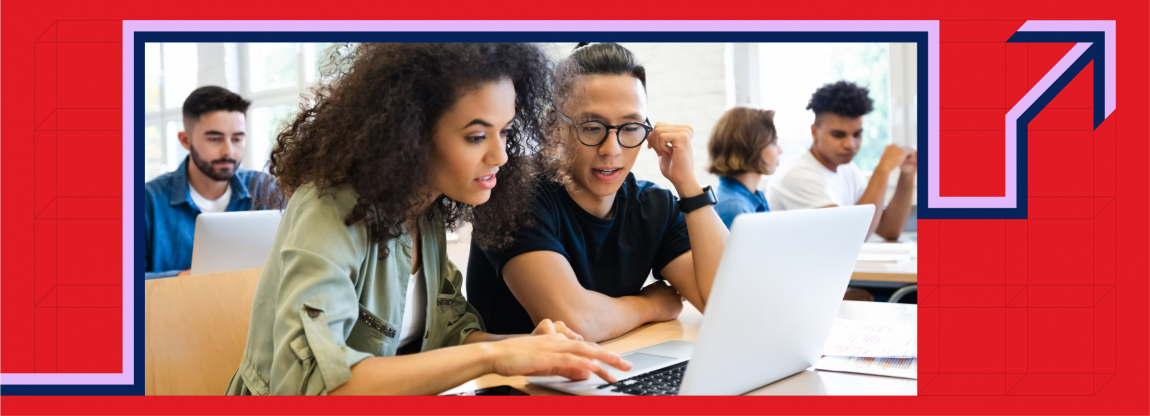6 Ways to Increase Personalized Learning in the Classroom
According to a 2015 study, 11,000 students who undertook personalized learning recorded more significant gains in reading and math than similar students who undertook traditional schools. It’s not rocket science - when you love something and are invested in it, you are more likely to remain engaged and excel.
A personalized learning approach appreciates the differences in higher education students’ abilities, interests, and needs. Depending on their unique characteristics, they get differentiated instruction to help them be more actively engaged, and help their learning go beyond academics.
Instructors are responsible for devising instructional methods and strategies based on students’ needs and preferences and acting as the facilitators in employing these strategies.
Here are six tips that can help increase personalized learning in the classroom:
Integrate Students’ Needs in Learning Materials
The first step to creating personalized learning in the classroom is selecting the right course materials for your course. Instructors should be fully engaged in selecting learning materials that complement their teaching approach and support personalized learning. An understanding students’ strengths, weaknesses, and potential and are valuable in developing adaptive learning systems.
Empower Your Students
For the personalized learning approach to succeed, students need to feel in charge of their learning journey and experiences. Educators can achieve this by allowing students to take control of their learning experience by choosing the learning activities they complete, the assessments they take, and the method of relaying e-learning content. They are free to choose the tasks they will collaborate with peers and the applications to use that support learning. They can also take online assessments to gauge their understanding.
Develop a Personal Learning Plan
Even though you may be trying to create a personalized learning path for each student individually, the learning objectives of the course remain a critical part of the experience. Therefore, it is essential to create a robust learning plan that blends effortlessly with the crucial elements of the course and the unique needs of each student.
For example, if the goal is to master the software development process, students can adopt different learning plans, but the instructor ensures they help achieve the overall objective. Here, a collaboration between the educator and students is key to helping them develop short-term, medium-term, and long-term learning plans whose expected outcomes must align with the student goals and have a clearly defined path.
Leverage the Power of Technology
During a conversation on the role of educators amid the coronavirus pandemic, Diane R. Collier, an Associate Professor in the Department of Educational Studies at Brock University, said;
“While teacher education programs in Canada address teaching with digital tools, their main focus is in-person classroom teaching. With the COVID-19 lockdown, Canadian teachers struggled. They searched for online teaching skills and approaches while creating meaningful digital engagement and learning strategies.”
Higher ed instructors should leverage technology to connect and engage their students. Using online resources like Google Docs can make it easier to collaborate with students, monitor their works in progress, and provide personalized assistance away from the classroom.
Support Discussions
Allowing students to engage in discussions together is an excellent in-person learning strategy that bolsters their instructive, leadership, and communication skills. It is also a perfect formative assessment tool that educators can use to gauge students’ understanding.
Students who actively discuss a subject can help others understand and benefit from them demonstrate their understanding of the topic. They inspire peers, while instructors can use this opportunity to reinforce concepts from readings or lecture.
For instance, you can have students to form smaller groups based on their subjects of interest. Allow them to plan the learning activities, and assessments. Teachers can encourage learners who excel in particular topics to focus on these areas and follow pathways that interest them.
Set Goals
Although academic goals are paramount, allowing students to set their own goals can help steer them toward a larger, overall learning objective. When students set their own goals, they develop a sense of ownership, direction and focus more on their learning.
Students might have two or three goals with timelines, and they can set more after accomplishing their initial targets. Instructors can guide students through this goal-setting process, ensure they set realistic goals, and help them see where they are and where they need to be depending on their goals.
A one-size approach to learning cannot meet all the needs of your students. Shifting from the conventional style of teaching can be challenging, but it is possible to incorporate a personalized learning model into your course that meets the needs of your diverse students.

